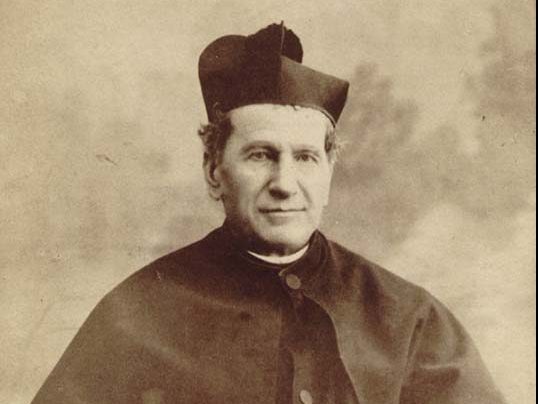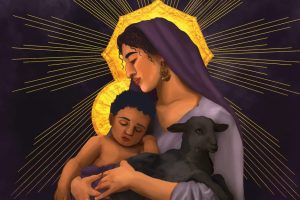John Bosco grew up poor, but whenever he had an extra penny, he would go to the circuses and fairs that came to his town. He watched in rapt attention as magicians performed the impossible. Sometimes he reasoned tricks out. Sometimes he begged magicians to teach him their secrets. With this knowledge he put on free magic shows for local children, pulling coins from ears and changing pebbles into candy. Being devout, he also took the opportunity to repeat the homily he heard at church on the previous Sunday to his audience.
When he became a priest in 1841, Don Bosco—“Father Bosco” in Italian—dedicated himself to helping the poor, ragged boys he met in the streets of Turin. He set up a kind of Sunday school/recreation center that he called a “festive oratory,” where boys would spend Sundays—and where he would spend his only day off from his job as an assistant chaplain. He used the magic he learned in childhood as a way to capture their attention. His patience and good humor got them to stay, learn about God, and get an education.
Don Bosco’s enthusiasm for magic also provided him with an outlet for his joyful spirituality. He saw children’s joy as their natural connection with the God of creation, and he used magic tricks to spark joy into the lives of poor children.
Like Don Bosco, I love surprising people with magic. I love the look of awe on their faces when the unexpected happens in front of them. In the tradition of Don Bosco, I’m a “gospel magician.” For 25 years I’ve performed magic shows that illustrate our faith. Even now, before each performance I offer a prayer to Don Bosco asking for his guidance. I pray that I don’t fumble a trick, that I convey theological lessons clearly, and that I show the audience a few moments of joy and awe. And if a show goes well, I am quick to remind the audience that my skills aren’t mine but God’s.
I remember once performing a version of Don Bosco’s legendary rope trick—turning three separate ropes into a single rope to illustrate the mystery of the Trinity. An older woman came up to me afterwards. “I was skeptical at first,” she said, smiling, “but when I saw your trick explaining the Trinity, I was amazed at how beautifully and truthfully you portrayed it. Thank you.” I had never been so happy to be able to use my skills and my art before as I was at that moment.
It’s little wonder that Don Bosco would look at a field of children playing and see God’s promise playing out before him. He believed playing was how children experience the joy of the moment, how they live fully in God. Maintaining balance in life, he believed, was important; becoming too serious about work or religion or even studies was inappropriate. It is this same philosophy that the Salesians—the religious communities Don Bosco founded for both men and women and named for his favorite saint, Francis de Sales—use in their ministries with children even to this day.
To Don Bosco, education was a means to direct oneself toward God. After establishing his “festive oratory,” he and his fellow Salesians opened dozens of schools that followed his innovative educational philosophy based on Christian joy and hope. He wanted children to be joyful and to exult in the Lord, and he wanted all Christians to take to heart Christ’s admonition that we should all become “as small children” (Matt. 18:1-4).
I’ve always believed that what makes a saint is not only his or her total dedication and abandonment to God but also the gift to condense and crystallize the Christian message and then to communicate that understanding. As Francis of Assisi sacramentalized nature and Ignatius of Loyola sacramentalized education, so too did Don Bosco sacramentalize joy. Perhaps it’s not surprising that he responded to the magic of God’s mysteries with magic of his own.
Don Bosco offers a unique and magnificent perspective on Christ’s message: Be joyous! Love life! Become as a child again and love God!
This article appeared on the April 2006 issue of U.S. Catholic (Vol. 71, No. 4, pages 46-47).













Add comment